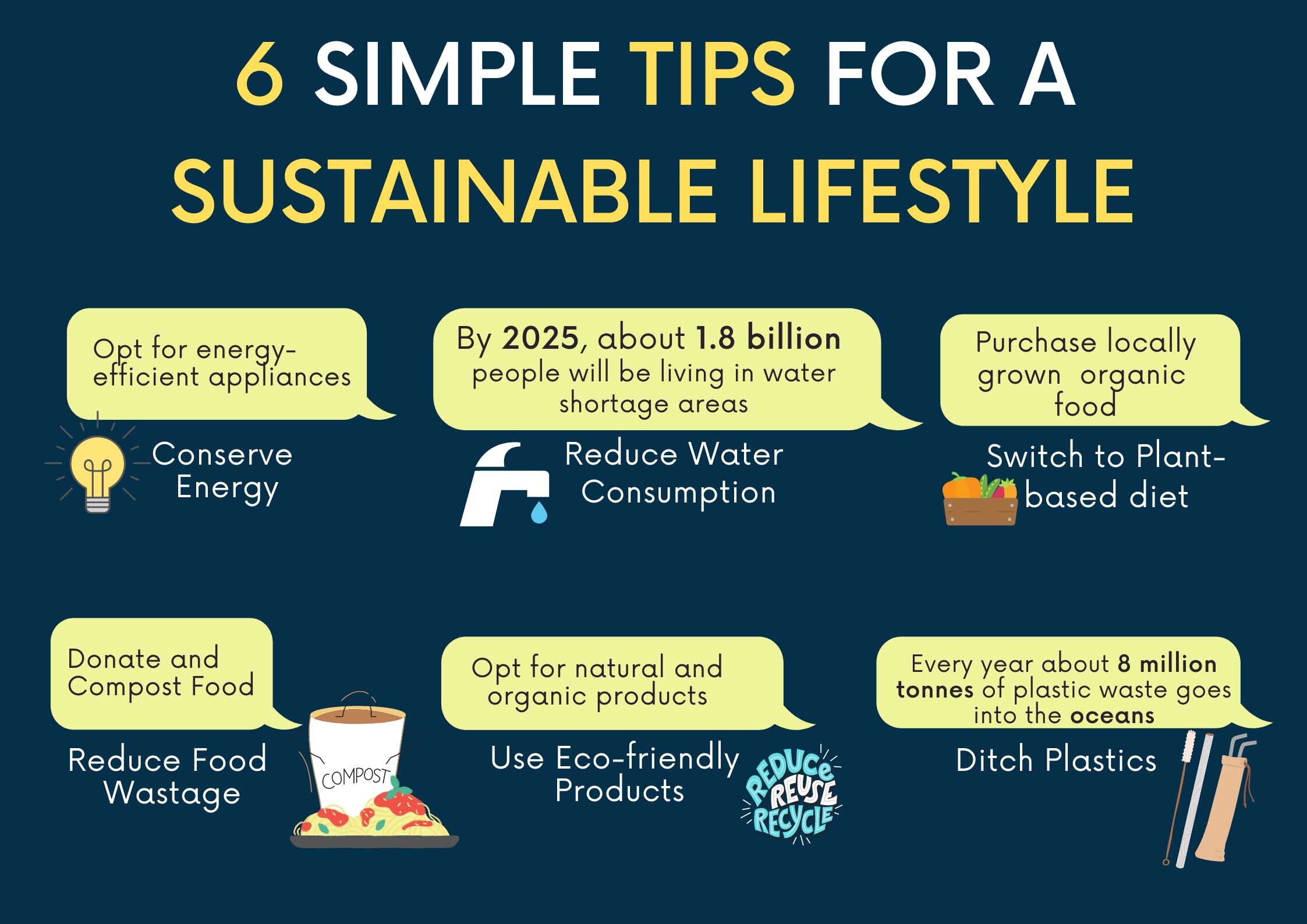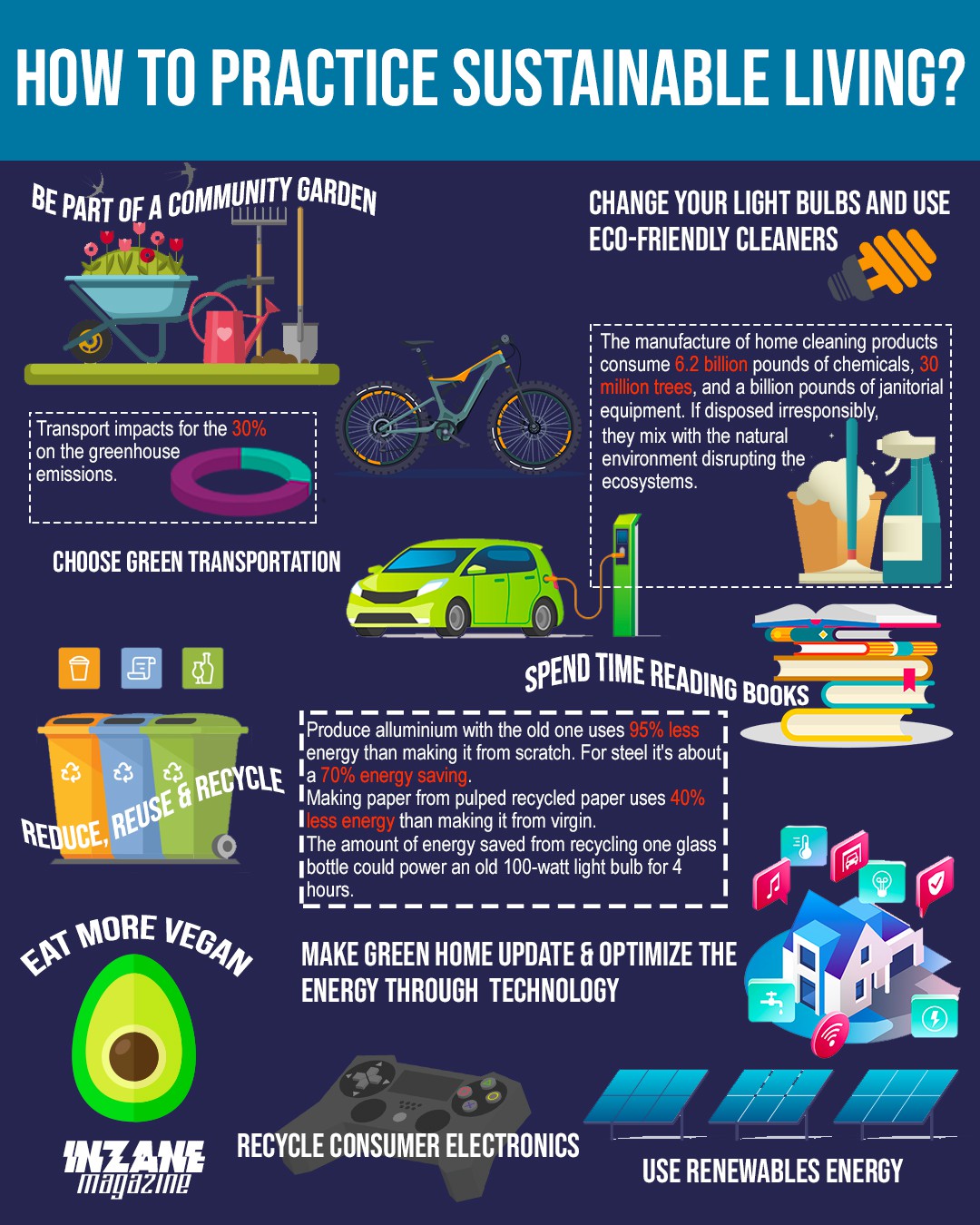To practice sustainable living, reduce waste and conserve resources. Make eco-friendly choices in daily activities.
Sustainable living involves making conscious decisions to lessen our environmental impact. This lifestyle promotes a healthier planet and conserves resources for future generations. Simple changes, like using reusable bags and reducing energy consumption, can make a significant difference. Opt for public transportation, plant-based diets, and support local businesses to further minimize your ecological footprint.
Educate yourself on recycling and composting to manage waste effectively. Sustainable living is not just a trend; it’s a commitment to preserving our planet. Embrace these practices to lead a more eco-conscious life and inspire others to do the same. Small steps can create a big impact.
Introduction To Sustainable Living
Sustainable living means making choices that are good for the environment. It helps protect nature and reduce waste. This way of life makes the world a better place.
Why It Matters
Sustainable living is important for many reasons. It helps reduce pollution and saves natural resources. Our planet has limited resources, and we need to use them wisely.
When we use less energy, we create less carbon footprint. This helps fight climate change. We also make the air and water cleaner for everyone.
Benefits For You And The Planet
Sustainable living has many benefits. It can save you money. Using less energy and water means lower bills.
| Benefit | For You | For the Planet |
|---|---|---|
| Lower Bills | Save money on energy and water | Reduce resource use |
| Less Waste | Less trash to manage | Less pollution |
| Healthier Living | Fewer chemicals in your home | Cleaner air and water |
- Use reusable bags and bottles
- Recycle paper, glass, and plastic
- Compost food scraps
By making small changes, you help yourself and the planet. Everyone can practice sustainable living. Start today!
Reducing Waste
Reducing waste is key to sustainable living. It helps protect the planet. Simple steps and composting make a big difference. Let’s explore how to minimize waste effectively.
Simple Steps To Minimize Waste
Follow these steps to reduce waste in your daily life:
- Use reusable bags for shopping.
- Say no to plastic straws and use metal ones.
- Buy in bulk to reduce packaging waste.
- Avoid single-use products like plastic cutlery and plates.
- Recycle whenever possible.
Composting Basics
Composting turns kitchen waste into valuable soil. Here’s how to start:
- Choose a compost bin or make your own.
- Add food scraps like vegetable peels and coffee grounds.
- Include yard waste like leaves and grass clippings.
- Keep the compost moist but not too wet.
- Turn the pile every few weeks to aerate.
Composting reduces landfill waste and improves soil health. It is an easy way to live sustainably.
Energy Conservation
Energy conservation is a crucial part of sustainable living. By conserving energy, you can reduce your carbon footprint and save money. Explore various ways to conserve energy in your daily life.
Efficient Home Practices
Small changes at home can lead to significant energy savings. Here are some efficient home practices:
- Use LED bulbs instead of incandescent lights.
- Unplug devices when not in use to avoid phantom energy loss.
- Install smart thermostats to control heating and cooling efficiently.
| Action | Energy Saved |
|---|---|
| Switch to LED bulbs | Up to 80% |
| Unplug devices | 5-10% |
| Smart thermostats | 10-15% |
Renewable Energy Options
Consider renewable energy options for a sustainable lifestyle. These options reduce reliance on fossil fuels:
- Solar panels convert sunlight into electricity for your home.
- Wind turbines generate electricity from wind energy.
- Geothermal systems use the Earth’s heat for heating and cooling.
Investing in renewable energy can lower your energy bills. It also supports a greener planet.

Credit: www.facebook.com
Sustainable Transportation
Practicing sustainable living involves making eco-friendly choices in daily activities. Transportation is a key area where we can make a significant impact. Sustainable transportation means using methods that reduce environmental harm and conserve resources. This includes walking, biking, public transport, and electric vehicles.
Choosing Greener Travel
Choosing greener travel options is essential for a sustainable lifestyle. Here are some ways to make your travel eco-friendly:
- Walk or Bike: These are the greenest ways to travel. They produce zero emissions and improve your health.
- Carpooling: Share rides to reduce the number of vehicles on the road.
- Electric Vehicles: Switch to electric cars to cut down on fossil fuel usage.
Benefits Of Public Transport
Public transport is a great option for sustainable travel. Here are some of its benefits:
| Benefit | Description |
|---|---|
| Reduces Emissions | Public transport cuts down on the number of vehicles, lowering emissions. |
| Saves Money | Using buses or trains is often cheaper than driving a car. |
| Less Traffic | More people using public transport means less traffic congestion. |
| Conserves Resources | Fewer cars on the road means less fuel consumption. |
Incorporating these sustainable transportation methods into your daily life can make a big difference. Start today to help protect our planet.
Eco-friendly Shopping
Practicing sustainable living can start with how you shop. Eco-friendly shopping means making choices that are good for the planet. Let’s explore ways to shop sustainably.
Buying Local
Buying local products can help reduce carbon footprints. Local goods travel shorter distances. This means less fuel and fewer emissions. Fresh produce from local farms often uses fewer pesticides. Local shops also support the community’s economy. You can find unique items not available in big stores. Farmers markets are great places to start.
| Benefit | Details |
|---|---|
| Reduce Emissions | Less transport means fewer pollutants. |
| Support Community | Local businesses boost the local economy. |
| Fresh Products | Often uses fewer chemicals and is fresher. |
Choosing Sustainable Brands
Choosing sustainable brands helps protect the planet. These brands often use eco-friendly materials. They also focus on fair labor practices. Look for brands that minimize packaging waste. Some brands even offer recycling programs. Reusable products are a good choice too. You can find clothes made from recycled fabrics.
- Eco-friendly materials
- Fair labor practices
- Minimal packaging
- Recycling programs
- Reusable products
Remember to research brands before buying. Look for certifications like Fair Trade or B-Corp. These labels show the brand’s commitment to sustainability.

Credit: www.zricks.com
Water Conservation
Water is a precious resource. Conserving water helps the environment and saves money. By adopting simple habits, everyone can contribute to water conservation. Here are some effective ways to save water and live sustainably.
Tips To Save Water
Implementing these tips can significantly reduce water usage:
- Fix Leaks: A small drip can waste gallons of water.
- Shorten Showers: Aim for five minutes or less.
- Turn Off the Tap: Don’t let water run when brushing teeth.
- Use a Broom: Sweep driveways instead of hosing them down.
These actions are simple but have a big impact. Save water every day with these easy changes.
Rainwater Harvesting
Rainwater harvesting is an excellent way to conserve water. Collecting rainwater reduces the demand on municipal water supplies. Here are some steps to start rainwater harvesting:
- Install a Rain Barrel: Place it under a downspout.
- Use a Filter: Keep debris out of the barrel.
- Connect a Hose: Use the collected water for gardening.
Harvesting rainwater is simple and effective. It helps save water and benefits plants.
Sustainable Eating
Adopting sustainable eating habits can significantly reduce our environmental footprint. It means choosing foods that are healthier for both us and the planet. Here are some ways you can practice sustainable eating.
Plant-based Diets
Switching to a plant-based diet is a great way to eat sustainably. Plant-based foods require fewer resources to produce. They also generate less greenhouse gas emissions.
- Include more fruits and vegetables in your meals.
- Opt for legumes, nuts, and seeds as protein sources.
- Reduce your meat and dairy consumption gradually.
Eating plant-based doesn’t mean giving up taste. Many delicious recipes use only plants. You can find countless options online.
Supporting Organic Farms
Organic farming practices are better for the environment. They avoid harmful pesticides and synthetic fertilizers. Supporting organic farms helps promote these eco-friendly methods.
- Buy organic produce at your local farmers’ market.
- Look for organic labels on packaged foods.
- Join a community-supported agriculture (CSA) program.
Organic farms also tend to use less water and energy. They help maintain healthy soil and biodiversity.
| Sustainable Eating Tips | Benefits |
|---|---|
| Choose plant-based meals | Reduces carbon footprint |
| Support organic farms | Promotes eco-friendly farming |
| Buy local produce | Less transportation emissions |
Community Involvement
Practicing sustainable living goes beyond personal actions. Engaging with your community can have a larger impact. By working together, we can create a greener world. Community involvement makes sustainable efforts more effective and enjoyable.
Joining Eco-friendly Groups
Joining eco-friendly groups is a great way to start. These groups focus on sustainability. They provide resources and support for green practices. You can find groups locally or online. Here are some benefits of joining:
- Shared Knowledge: Learn from others’ experiences.
- Group Activities: Participate in clean-up events and workshops.
- Networking: Meet like-minded people.
Joining a group also keeps you motivated. You can see the real impact of your actions. It’s a fun way to make new friends too!
Volunteering For Green Causes
Volunteering for green causes helps the environment directly. Many organizations need volunteers. You can plant trees or help with recycling programs. Here are some ideas for green volunteering:
| Activity | Impact |
|---|---|
| Beach Clean-Up | Reduces ocean pollution |
| Tree Planting | Increases green cover |
| Community Garden | Provides local, fresh produce |
Volunteering is a hands-on way to make a difference. It also educates others in the community. You can inspire others to join the cause. Together, we can create a sustainable future.

Credit: theecoporium.com
Conclusion
Embracing sustainable living benefits both the planet and your well-being. Small changes lead to significant impacts. Choose eco-friendly products, reduce waste, and conserve energy. Support local businesses and opt for public transportation. Every step counts in creating a greener future.
Start today and inspire others to join the movement.

